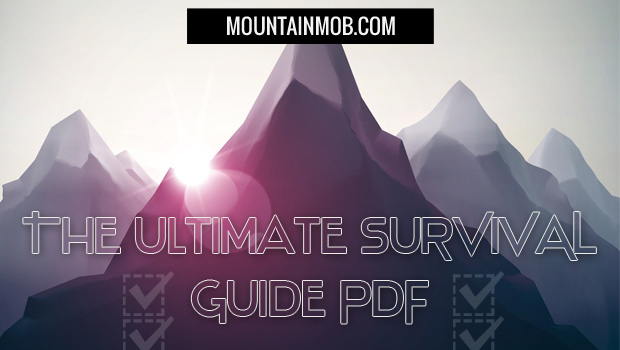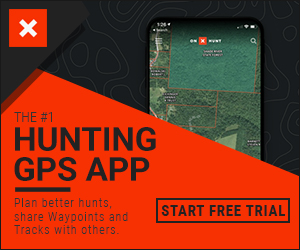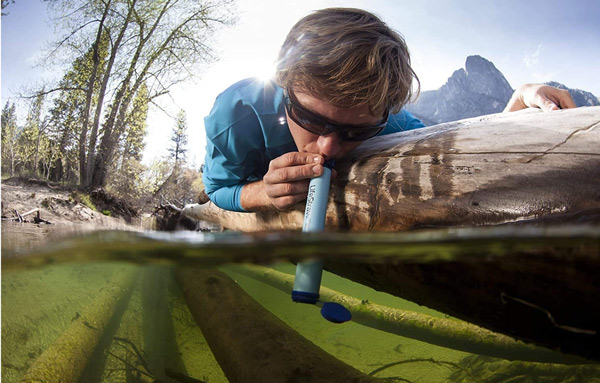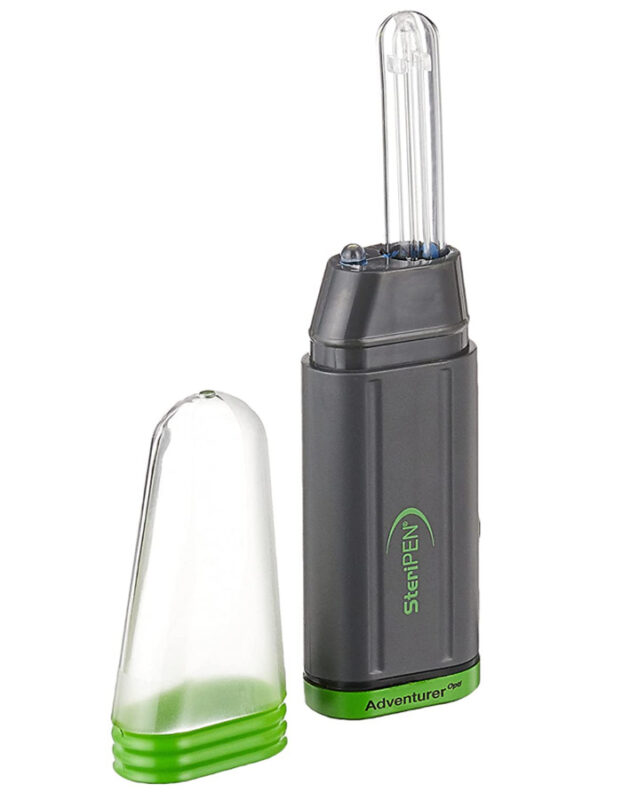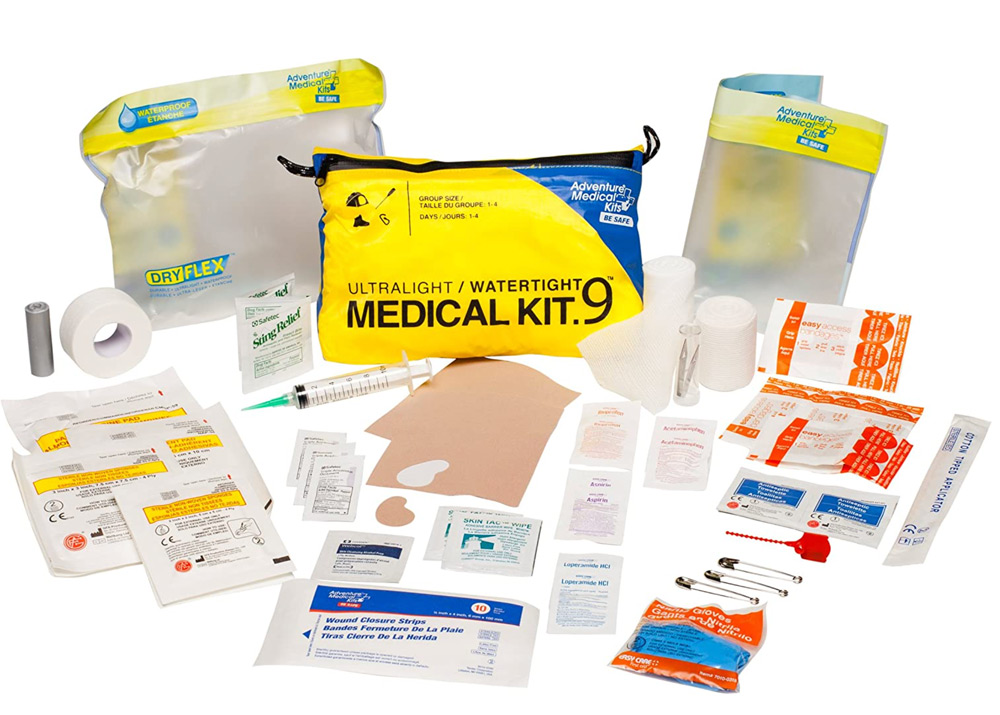Survival
The Ultimate Survival Guide PDF {FREE DOWNLOAD}
Let me guess. You’re searching for a survival guide PDF, and you seem only to be able to find a bunch of websites that have 100’s of different survival guides for any circumstance possible. That’s great. I like to pick and choose which unexpected survival situations I might find myself in.
I also like to pack around 124 different guides and cram my brain full of survival knowledge…okay maybe not to that extreme.
So here’s the deal:
We’re calling this the ultimate survival guide because if you can remember everything on just this one short page, your chances of survival go up and you get to be the one who tells your own survival story.
You might be wondering…what will we focus on?
By the time you finish this page, you will be an EXPERT in basic survival skills. Don’t confuse “basic” with “weak sauce”. Basic is what keeps your head attached to your body the moment your brain realizes you’re lost and begins to sound the alarms. Let’s get started.
There are 6 basic areas of survival:
- Mental psyche
- Rescue/signalling
- Food
- Shelter
- Water
- First aid
Mental Psyche
For those of you who have taken the Hunter’s Ed course, you may have watched a short video about a guy losing his common sense once he let panic overwhelm himself. In the movie, this man finds himself lost and is carrying a backpack with certain items that could have helped him survive.
However, once the panic set in, he lost it and went crazy. He ended up freezing to death with a small case of matches in his backpack.
Survival is just like life.
The better you are at managing yourself during untimely stress, the better you’ll be at processing what’s going on in your current state. This premature stress is a good thing when you’re hiking with your buddy, and he falls and breaks his leg, and you now need to traverse back to the trail head for help. You suddenly feel light, fast, and able to run three marathons in a row.
This is, of course, your adrenaline kicking in. Controlled adrenaline is good. Longlasting adrenaline is bad. You’ll notice physical changes in your body like breathing deeper, tense muscles, and possibly headaches. It also puts a mental strain on your mind, and feelings of hopelessness and fear (the bad kind) settle in. That’s why when you’re in a survival situation you are going to stop everything you’re doing. Even try to stop your brain from thinking. Take a deep breathe.
Tell yourself it’s going to be okay, you’ve prepared for situations like this, and you know how to get yourself out safely. Repeat this process over and over until you have control of your thoughts, and can begin thinking rationally.
Rescue/Signaling
This is the black sheep of the basic areas of survival family. Navigating your way to safety or signaling your rescue are both things that you do to end your survival situation. Everything else that is talked about on this list are things you must do in order to prolong your stay in survival mode.
KWYG – Know Where You’re Going
First things first. Know where you’re going. Spend some time on Google Maps online to get to know the area, especially paying attention to distinct landmarks like rivers, mountain peaks, trailheads, warming huts, etc. Make sure you plan in advance to have the proper tools to help you navigate. You should always carry a map and a compass. Make sure your cell phone battery is fully charged. In a perfect world, you pack an extra cell phone battery in case you need it. Technology is improving so fast, and more and more remote locations are getting cell phone service. Remember that your best chances of getting cell service in the backcountry is to get to the top of a ridgeline or peak. Now let’s talk about signaling your way out. There are multiple ways you can signal. You can use fire at night, smoke and shiny objects during the day. Wherever you are, make sure you find the biggest open area you can find and start setting up your fires.
Fire.
The international distress signal is to build three fires in the shape of a triangle. You could also place these in a straight line with about 25 meters (roughly 80 ft.) apart. It can be extremely difficult maintaining three fires, so make sure you have them ready to light as soon as you see or hear help off in the distance. You can also set a small tree on fire, just make sure it’s isolated as to not start a forest fire and endanger yourself even more. The fire method should be done at night.
Smoke.
This is to be done during the day. Your goal is to create as much smoke as possible. Build as big of a fire as you can, and cover it with greens.
Shiny Objects/Contrast/Sounds.
This one is pretty self-explanatory. Packing a small camping mirror will not only keep your ugly mug clean, but it can also save your bacon in a survival situation. Your goal here is to blind someone(not really) or create contrast with flagging tape or flares. Loud sounds can also work, so make sure you keep that whistle close when in survival mode. Now it’s time to talk about food:
Food
Food is a pretty important part of our lives. I mean, most people think if they go more than a day without food that they are on their way to meet their maker. In a survival scenario, food is definitely important, but not as URGENT as water and shelter.
It’s important to remember the rule of 3’s when in survival mode. You can survive 3 hours without adequate shelter in troubling conditions, 3 days without water, and 3 weeks without FOOD. What should you pack? In a perfect world, you would know ahead of time that you are about to get yourself into a survival situation. This would allow you to pack shelf-stable foods with high calories. Calories give you energy; energy keeps you sane and able to make correct survival decisions. These are foods like energy bars, dried fruit and nuts, and peanut butter. But that isn’t usually the case. So, what should you know how to do if you find yourself in this situation with limited food?
Conserve energy.
If you ever watch the TV show Dual Survivor then you know what it means to conserve energy. When Cody was on the show he would always consider how much energy it would require to make certain types of shelter, or obtain a certain food source. The idea here is that the less energy you use, the less you will be required to replenish.
Fish.
A basic understanding of how to fish is key. Spend some time fishing now, so that when the unexpected time comes in the future, you’ll feel comfortable trying to catch fish. If you know you are heading into water-filled country, it’s an absolute must to carry fishing line and a hook. They take up very little space and are light. In case you forgot to put the line and hook in your pack, you will need to think creatively in order to catch your fish.
Maybe your stealthy ninja skills are such that you can sneak up and swipe fish out of a stream. That is neat. For those of us who aren’t at that level, we would want to construct a blockade or dam using rocks, wood or whatever else we can find. Next, we’d herd the fish towards the blockade. Lastly, you’d want to quickly construct a second blockade that essentially traps the fish in a small pond. This will keep the fish in a manageable form which you can start swiping, grizzly bear style.
Snares.
Make sure to put some type of cordage or snare wire in your pack and have that with you at all times when in the backcountry. If you do that, you can make simple snares like this:
A nice rabbit or ground squirrel will taste like prime rib on a Friday date night when your belly is truly empty.
Plants.
This one requires you to do a little homework. You may need to pick up an edible plants guide from the local shop. Or pick up this best seller on Amazon.
It would be a shame to be in the backcountry with edible plants and not know it. Grab the book, and know your plants.
Shelter
Shelter can be a hard skill to master.
It’s not like fire building skills where you can go out in your backyard and practice starting a fire. In most cases, you need to be out in the elements in order to practice your shelter-building skills. Just because it might be a bit harder to practice, doesn’t mean you should let it slip. Your ability to construct a proper shelter could be the one thing that keeps you from freezing, or from nasty predators that roam at night.
Before you head out into the wild, you should always be familiar with the type of terrain in which you’ll be. Knowing your terrain will allow you to get familiar with different survival shelters that can be made from raw materials in the area.
Check out the two pages below for lists of survival shelters, and how to construct them:
Water
Back to the rule of thirds, we previously discussed how you can go three weeks without food. Water, on the other hand, is just three days.
Yes, that’s right, three short days.
Now you see how important it is to find a water source when you’re in a survival situation. Days before you set out on your excursion, you need to start properly hydrating yourself. It’s not a good idea to begin your adventure dehydrated. You can easily tell how hydrated you are by the color of your urine. Anything darker than a light yellow color suggests you’re not properly hydrated.
Before you set off, make sure your urine is clear as glass by drinking lots of water. Water may or may not be abundant where you’re at. Make sure to pack some water even if you know there’s plenty in the area. When you’re in the backcountry, you’ll need a way to purify your water.
The main ways to purify your water:
1 – Heat:
A simple camp stove burner or fire will do the trick. Our absolute favorite burner for backcountry and survival situations is the Jetboil.
2 – Filtration system:
We have two different lightweight and convenient water filtration systems:
3 – UV Water Purifiers:
The SteriPEN is probably our new favorite water purifier. It destroys more than 99.9 percent of harmful microorganisms, including Giardia, bacteria, viruses and protozoa. It is lightweight and easy to pack around.
All you need to do is fill up your water bottle, and then place your steriPEN in and move around in a circle for about 90 seconds.
First Aid
Having an efficient survival first aid kit can save your life, literally. It’s important to know what you have in your kit, what you’ve used and therefore, need to replenish, and how to apply basic first aid procedures.
Depending on the type of excursion you’re on, will determine how large of survival first aid kit you can bring. A kit like this one is nice because it’s small and lightweight.
If you’d like to create your own medical first aid survival kit, here are the things you’ll need:
Pain medications.
This is basic 101 survival, but make sure you’ve got a way to decrease the amount of pain you might get yourself in.
These are things like:
- Tylenol, Ibuprofen, Aspirin
- Lidocaine
A way to stop close wounds and/or stop bleeding.
Another vital part of your kit should be a way to close a wound and prevent infections from getting in. Here are some great ways to do that:
- Bandaids, butterfly sutures
- Duct tape (plus it can be used in multiple other ways)
- Super glue
Allergy medications.
Coming down with an allergic reaction can put an end to your fun real quick. Even if you don’t think you’re allergic to anything, make sure you have some of the below items in your pack:
- Antihistamine (Benadryl)
- Antihistamine (creams)
Infection prevention.
It can be a challenging thing to keep your body clean when in a survival situation. Having the supplies to properly dress wounds in a way that will prevent infection is vital to your survival first aid kit. Be sure not to forget things like:
- Soap
- Hand sanitizer
- Antibiotic creams/ointments
- Disinfectants/antiseptics – isopropyl alcohol, peroxide, antiseptic wipes, etc.
- Gauze/adhesive wound dressings
Items specific to you.
You need to be responsible for your well-being. This means planning in advance to pack any special medication you need while in the backcountry. Forgetting your meds on a dinner date isn’t the same as being 10,000 ft above sea level with miles and miles between you and the closest neighbor.
What’s the bottom line?
Depending on the amount of experience you have had in the backcountry, you may or may not be feeling overwhelmed right now. Don’t worry. The skills and guidance mentioned above are things that can be easily learned, especially for those who have the desire.
Building a foundation of knowledge using this ultimate survival guide instantly makes you a treasured member of society. Most if not all of the skills mentioned above can be used in places other than the backcountry.
When extreme circumstances come up, and the situation is chaotic, you will be the one who calms everyone down and turns the situation around with the skills you’ve obtained from this guide. Now go share your knowledge with others, and always remember to plan ahead, be safe, and have a whole lot of fun!

